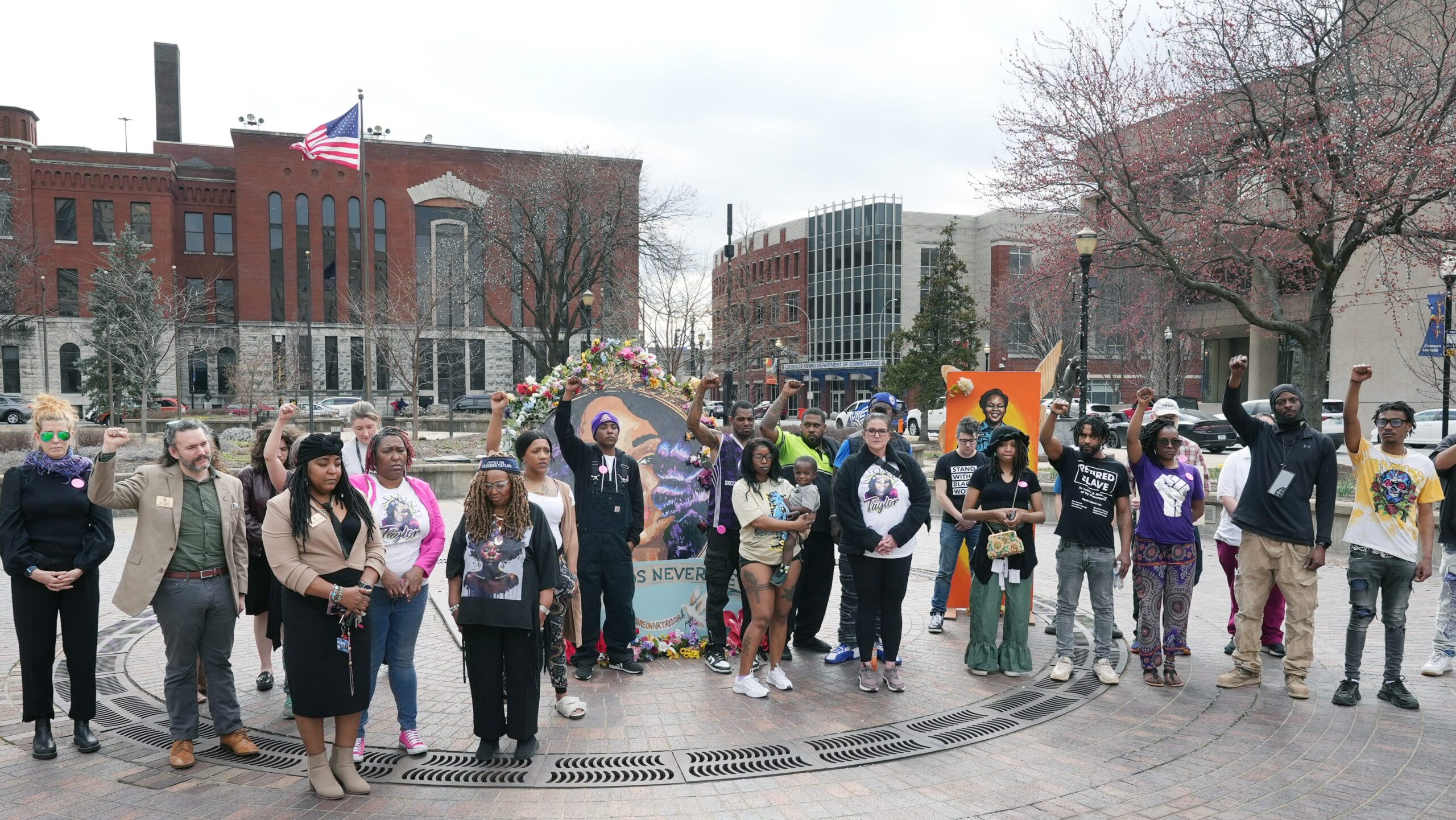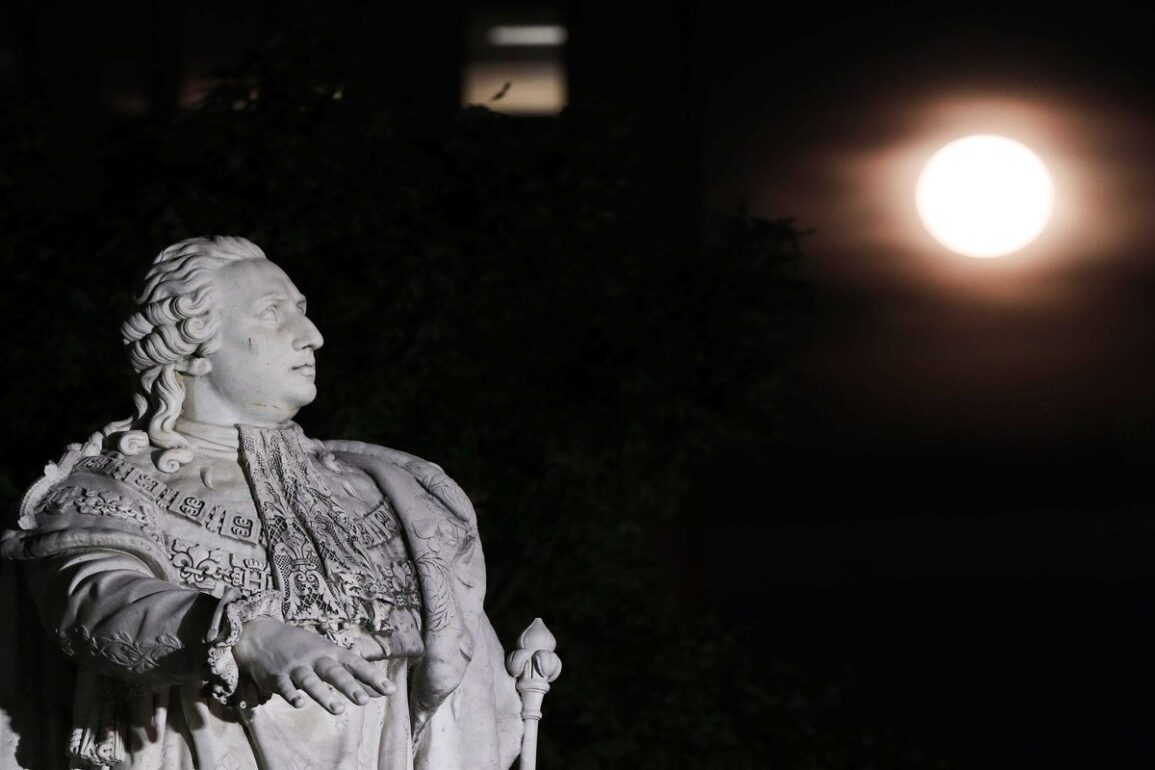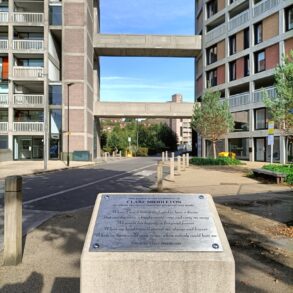I fear that the real aim is to send a message that our city is hostile to anti-police protests and that we prefer to pretend Ms. Taylor’s killing never happened.

Councilwoman Shameka Parrish-Wright remembers Breonna Taylor on 5th anniversary
Councilwoman Shameka Parrish-Wright speaks at Jefferson Square Park in Louisville on the fifth anniversary of Breonna Taylor’s death.
- Louisville Metro Council allocated $200,000 to restore the King Louis XVI statue, despite the statue being beyond repair and the Commission on Public Art’s recommendation against it.
- The former chair of the Commission on Public Art resigned in protest, citing the misallocation of funds that could be used for other art projects.
- The restoration is viewed as a political statement against the 2020 Breonna Taylor protests, during which the statue was vandalized.
- A “percent for art” plan is proposed to fund future art projects instead of costly repairs.
Two weeks ago, very near to the five-year anniversary of the 2020 Breonna Taylor protests, the City of Louisville sent out a request for bids to erase all evidence of those protests from the King Louis statue.
One year prior, the boards of directors for both the American Institute for Conservation and the Foundation for Advancement in Conservation urged Mayor Greenberg and Metro Council to reconsider any conservation of the statue — it was, in their estimation, now a document to a historical protest. The city ignored the letters.
The Commission on Public Art, for which I serve as chair, and our Metro Government liaison, tried to find a compromise wherein the city would stabilize the statue so that a local institution could display it as-is, leaving the protest graffiti intact. Metro Council was not swayed.
I love this city; it deserves great art. And I’ve done my best to try to get us some. I’ve served on COPA for ten years, and as chair for the last seven. I was also a member of the mayor’s monuments commission. These are not glamourous jobs. They aren’t paid jobs either. We mostly spend our time trying to conserve the art we have (when we can afford it), approve artwork from community partners and support new, temporary projects in partnership with nonprofits in the city. Unlike most cities our size, which have a percent for art tax plan, we have a “fee-in-lieu” policy attached to new construction that generates almost nothing. And so, the money we get comes from the Metro Council budget. We got a lot this year. But some of it came with strings attached.
Metro Council wants to spend thousands on a statue beyond repair
Those strings are anchored to the King’s statue. Metro Council granted $200,000 in funds earmarked to conserve it, stipulating specifically that the protest graffiti be removed.
The Council never consulted with COPA regarding this plan, never asked what we needed for conservation, never asked for a conservation priority list of artwork in the city or a cost-benefit analysis of a King Louis repair. If they had, they would have heard (and did hear, when we insisted on telling them) that the statue is beyond repair.
It has been outside for so many freeze and thaw cycles that its delicate marble is too cracked to return to the out of doors. At best, the statue could be stabilized and repaired for safe exhibition, but it could never go back outside, and it is so heavy that, if it did move inside, its new home would require reinforced floors.
However, the cost for even this repair would be significantly higher than the statue’s value: The King’s estimated fair market value is only $60,000. Since our city didn’t commission the statue (it was made but unwanted in France), it is not an ideal target for tax-funded conservation, especially considering all the local art in need of care.
And yet rather than ask our advice, Metro Council made their own plan for the statue. Structural stabilization is now complete, and the call for cleaning has been published.
Why pay so much to “fix” a document of the Breonna Taylor protests?
But why? Why allocate all this money — money that would go a long way toward preserving local art in our collection — to “fix” a statue that is beyond repair?
One answer I’ve heard is that Louis is our namesake, and there is some value in maintaining this historical connection. The French King supported the American revolution, which is why we honor him today. It is important to note, however, that after the US revolution, when France asked us to return the favor, our forefathers demurred. They didn’t care about the connection.
Another answer is that much of the graffiti attacks police officers, registering common refrains from the 2020 summer protests.
I’ll admit, it can be uncomfortable to read. Like most Louisvillians, I am grateful for our public servants (I count myself among them), and that gratitude is particularly due to officers who risk their safety to protect our streets and homes. But is comfort what we want from our art? This city is great, but it is still broken, and it still breaks people like Taylor — people who have suffered historical segregation and exclusion. Perhaps we should be willing to share in a bit of discomfort until all Louisvillians can find comfort in our public spaces?
I will not support the city’s hostility to anti-police protests
There are legitimate reasons to care for this statue, but, from where I sit, they do not justify the high price tag of that care. Indeed, it is hard to imagine that anyone would support this expense if the statue had been damaged by accident or act of God.
I fear that the real aim of these funds to send a message that our city is hostile to anti-police protests and that we prefer to pretend Ms. Taylor’s killing never happened than face the fact that not enough has changed to prevent such tragedies in the future.
And I will not play the messenger. So with this letter I am resigning from COPA.
I wish the next COPA chair luck. This city deserves great art. And I don’t want to stir the pot. Perhaps Louisville wants their King back — perhaps they don’t mind spending tax dollars to repair an irreparable statue. They will just have to do it without me.
Before I go, I want to make one final proposal: rather than using art conservation funds to play politics, let’s get to work establishing a percent for art plan that would truly transform Louisville’s artistic landscape. We deserve great art, and such a policy would make this a materially better place to live, work, and recreate.
Chris Reitz is director of the Hite Institute of Art and Design and associate professor of Critical and Curatorial Studies at the University of Louisville. In addition to his book, “Martin Kippenberger: Everything is Everywhere,” he has published numerous articles on modern and contemporary art, exhibitions and public monuments and has curated dozens exhibitions. He is, as of this letter, the former chair of the Louisville Commission on Public Art.
This post was originally published on this site be sure to check out more of their content.









